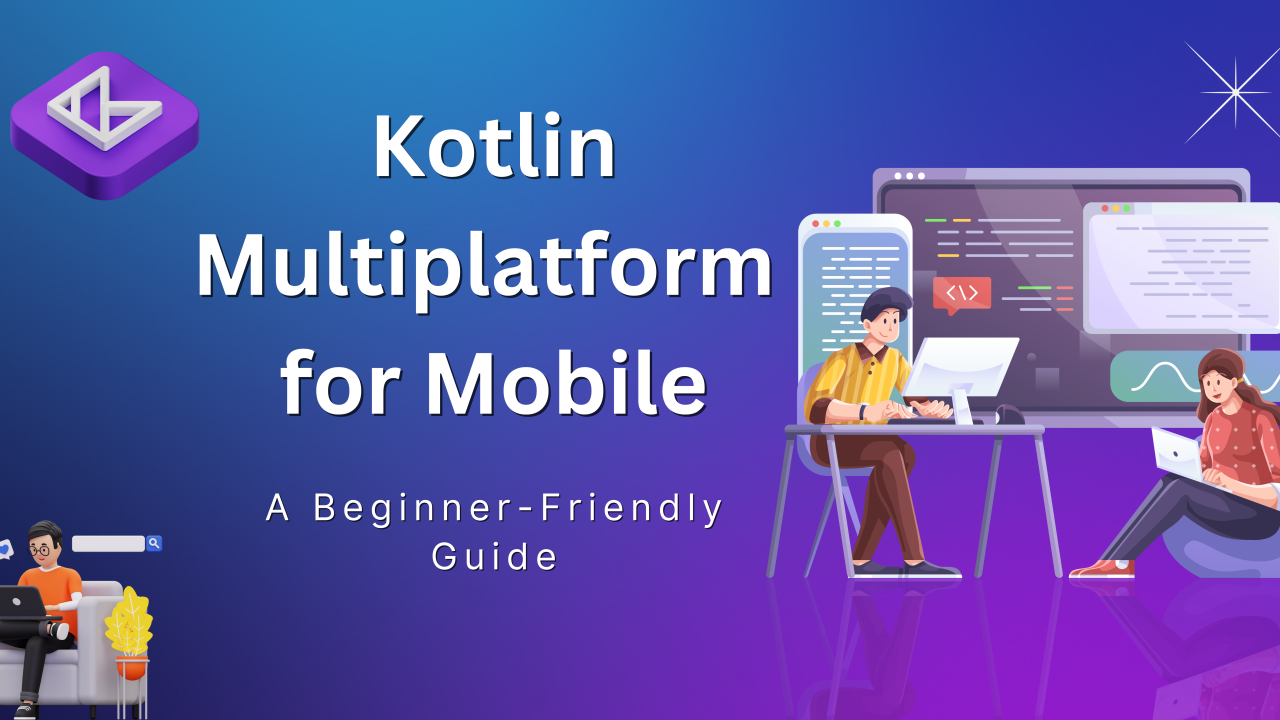
Kotlin Multiplatform for Mobile: A Beginner-Friendly Guide
Anand Gaur
Mobile Application Tech Lead @ Tata Consultancy Services || 22k+connection || Ex Samsung || Ex TechMahindra
In the world of mobile development, creating apps for both Android and iOS can often be time-consuming and resource-heavy. Traditionally, developers would need to write separate codebases for each platform — one for Android (in Kotlin or Java) and one for iOS (in Swift or Objective-C). However, Kotlin Multiplatform (KMP) aims to simplify this by allowing developers to share common code across multiple platforms.
In this blog, we’ll explore Kotlin Multiplatform, how it works for mobile development, how to set up a KMP project, and why it’s considered a game-changer for the future of mobile development.
What is Kotlin Multiplatform (KMP)?
Kotlin Multiplatform is a feature from JetBrains (the creators of Kotlin) that allows developers to write common code that can be shared across multiple platforms (Android, iOS, Web, Desktop). It doesn’t try to replace platform-specific code but allows you to write shared logic (such as business logic, networking, or data storage) while keeping the flexibility to write platform-specific UI or native features separately.
KMP works on the principle of writing a shared codebase for the business logic, algorithms, and data handling while letting you write specific code for each platform (like the UI or platform APIs).
Benefits of Using Kotlin Multiplatform for Mobile
How Does Kotlin Multiplatform Work?
Kotlin Multiplatform divides your project into shared code and platform-specific code.
With this approach, you have the best of both worlds: shared business logic and full control over the UI and platform-specific features.
Setting Up a Kotlin Multiplatform Project
Let’s walk through the steps to set up a basic Kotlin Multiplatform project for mobile development.
Prerequisites:
Step-by-step Guide:
2. Project Structure: After the project is created, you’ll notice two main parts:
3. Add Dependencies: In the shared module’s build.gradle.kts, add dependencies for the libraries you need, such as kotlinx.coroutines or Ktor.
kotlin {
sourceSets {
val commonMain by getting {
dependencies {
implementation("org.jetbrains.kotlinx:kotlinx-coroutines-core:1.5.2")
implementation("io.ktor:ktor-client-core:1.6.3")
}
}
val androidMain by getting
val iosMain by getting
}
}
4. Writing Shared Code: You can write shared code in the commonMain source set. This could be business logic, API requests, or data handling that doesn’t depend on the platform.
expect fun platformName(): String
fun getGreeting(): String = "Hello from ${platformName()}"
Here, expect is used to declare platform-specific functions, which you’ll implement separately for Android and iOS.
5. Platform-specific Implementations: In the androidMain and iosMain source sets, you implement the platformName function for each platform.
领英推荐
For Android:
actual fun platformName(): String = "Android"
For iOS:
actual fun platformName(): String = "iOS"
6. Running the Project:
The Future of Kotlin Multiplatform
Kotlin Multiplatform is still evolving, but its potential is massive. JetBrains and the Kotlin community are actively working on making KMP more stable, efficient, and user-friendly.
Here’s what makes KMP a strong contender for the future of mobile development:
Google Announced Official Kotlin Multiplatform Support
When Google announced official support for Kotlin Multiplatform (KMP) on Android during Google I/O 2024, it signaled a major shift in how developers could approach cross-platform mobile development. Kotlin Multiplatform was already widely appreciated, but Google’s backing adds credibility and momentum to this technology. With Google’s endorsement, developers can now confidently adopt KMP for projects where Android and iOS code sharing is a priority.
Here are some key points from this announcement:
Why Does Google’s Endorsement Matter?
Google’s endorsement essentially means that KMP is no longer just an experimental feature — it is becoming a mainstream solution. Developers, especially those working in companies, can now feel more confident in adopting KMP for production environments, knowing that Google is actively working to make it more reliable and integrated into the Android ecosystem.
Conclusion
Kotlin Multiplatform offers a powerful and flexible way to develop mobile apps for both Android and iOS with a shared codebase. By focusing on shared business logic and leaving platform-specific code to each platform’s native tools, KMP strikes a balance between efficiency and flexibility. As its ecosystem grows, Kotlin Multiplatform could become the standard approach for cross-platform mobile development in the future.
If you’re looking to streamline your mobile development process while maintaining performance and flexibility, Kotlin Multiplatform is worth exploring!
Thank you for reading. ?????
Don’t forget to Like ?? and follow me for more such useful articles about Android Development, Kotlin.
If you need any help related to Android, Kotlin. I’m always happy to help you.
Follow me on: